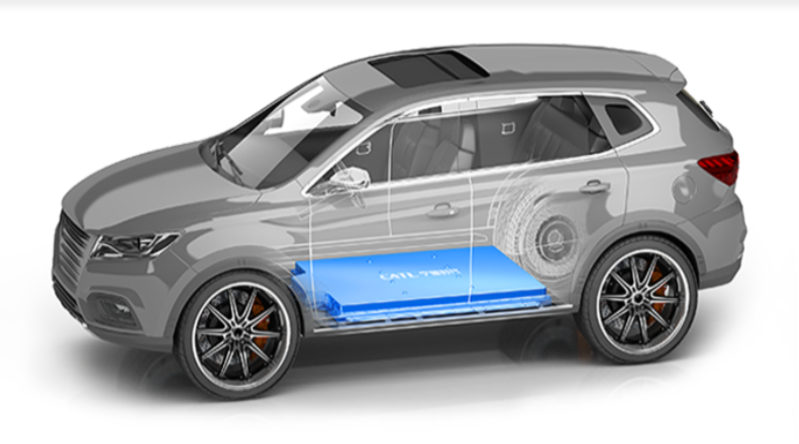Sign up for CleanTechnica’s Weekly Substack for Zach and Scott’s in-depth analyses and high level summaries, sign up for our daily newsletter, and/or follow us on Google News!

A few weeks ago, BYD announced new battery technology that allows electric cars to recharge in about 5 minutes. This week at the annual Shanghai Auto Show, CATL fired back with fast charging news of its own. It claims its second generation Shenxing battery can add 520 kilometers (323 miles) of range in just five minutes of charging time. The BYD announcement claims its batteries can add 400 kilometers (250 miles) in 5 minutes using a Level 3 fast charger.
If you focus on those two claims, you are missing the point. What this news means is that whether your next EV has a battery from CATL or BYD is irrelevant. What matters is that the constant bleating of anti-EV folks about how they won’t buy an electric car until they can charge it in the same time as it takes to fill a gas tank is now just so much hot air. A while ago they said they wouldn’t buy an EV until it offered at least 300 miles of range. That barrier has also been broken, so now the Chicken Littles will need to invent a new reason to disdain electric cars.
CAT founder and chairman Robin Zeng told those in attendance in Shanghai that the company planned to make a presentation at the Auto show an annual event and reminded people that CATL has “never defined itself as a battery manufacturer but a pioneer of the clean energy system.” More than 67 new electric vehicle models will be powered by the Shenxing battery this year, said CATL’s Chief Technology Officer Gao Huan, without specifying how many would be equipped with the first or second generation versions. More than 18 million cars equipped with CATL batteries are currently in service in more than 66 countries, according to Gao.
Plenty of automakers in China are looking over the shoulders at CATL and wondering if it has plans to become a car manufacturer itself. Xiaomi and Huawei are both cellphone manufacturers which have jumped into the EV space recently. Jim Farley, CEO of Ford, drove a Xiaomi SU7 for 6 months and didn’t want to give it back. If CATL did decide to build its own cars, the chances are they would be highly competitive.
Joanna Chen, a China auto industry analyst for Bloomberg Intelligence said after the event in Shanghai, “CATL’s next generation Shenxing batteries highlight its deep R&D resources and could prompt robust orders as automakers scramble to stay competitive after BYD’s high profile launch last month. Upgraded technologies at CATL and BYD, which together control 70% of China’s EV-battery market, look set to power more mass market EVs with fast charging capabilities.”
More Good News From CATL
CATL has other news to share with the world this week in Shanghai. According to Reuters, the company introduced a new brand for its sodium-ion batteries called Naxtra, which it said would go into mass production in December. It became the first major automotive battery maker to launch sodium-ion batteries in 2021. Unlike lithium, sodium is cheap and abundant, which could lower the cost of electric cars. But in addition, sodium-ion batteries have a much lower fire risk as well.
CATL said the first of its new sodium-ion batteries will have an energy density of 175 watt-hours per kilogram, which is just slightly less that the energy density of lithium iron phosphate batteries used today in electric vehicles and grid energy storage systems.
Sodium batteries may be less costly than lithium batteries eventually. This is new technology and so it does not have the benefit of economies of scale yet, said Ouyang Chuying, co-president for research and development at CATL. Robin Zeng is on record as saying he sees sodium-ion batteries potentially replacing up to half the market for LFP batteries.
The company claims its Naxtra batteries are ready for commercial applications and have been tested under extreme conditions, including very cold weather and fire. Even after being placed in an ice chamber with a temperature of minus 40 degrees Celsius, Naxtra had zero power degradation, the company said. A plug-in hybrid vehicle equipped with a Naxtra battery would have a range of about 200 kilometers, while a battery-electric car could travel about 500 kilometers, the company claims
Behold The Range Extender Battery!
CATL wasn’t done with its battery news, however. In Shanghai it also announced a new battery that uses no graphite in its electrodes. Graphite is expensive, so removing it from the list of materials will make batteries that are less expensive. But graphite-free batteries have some drawbacks. They charge more slowly and cannot be recharged as many times as conventional EV batteries before they need to be replaced.
That’s why CATL proposes using them solely as auxiliary batteries that will share space with the primary battery to either allow longer range driving occasionally or to permit the installation of a smaller battery pack originally. Think of it as serving the function of a range extender engine without the need for a gasoline engine on board with a gas tank, exhaust system, and all the other attributes of an internal combustion engine.
Removing graphite will result in batteries that are less expensive once economies of scale are realized and will allow 60% more electricity to be squeezed into each cubic inch of the battery, said Gao Huan. The second battery also would provide backup in case the main battery has a problem. That has become a more important consideration as semi-autonomous driving systems become more common. Those features require an uninterrupted supply of electricity to function properly.
Ouyang Chuying said that auxiliary batteries without graphite would be available in cars in two to three years and possibly sooner. He declined to say which automakers might be the first to use them, according to the New York Times.
The Takeaway
There are a couple of lessons from the Shanghai event. First, if the US is moving toward a future in which improvements in battery technology permit lower cost electric cars with longer range, is is moving too slow. Second, if Chinese companies are forbidden to do business in the US, Americans will have to make do with more expensive cars that underperform compared to those available from Chinese manufacturers. By building a tariff wall around the US, the government is necessarily excluding the most advanced technologies from reaching American consumers. This might be a good time to recall the wisdom of Robert Frost, who wrote in his poem Mending Wall, “Before I built a wall I’d ask to know what I was walling in or walling out, and to whom I was like to give offense.”
Third, anyone who still thinks Tesla is leading the pack when it comes to battery development is delusional. Not so long ago, Robin Zang, the founder of CATL, said Elon Musk doesn’t really understand battery technology. Tesla may have been a leader once, but no more. The Chinese are out front in the race to develop better, less expensive batteries and are pulling away. With more tariffs and threats of deportation against key researchers, the US will continue to fall further and further behind until all it has to sell people is a modern day version of the Trabant — the dreadful excuse for a car that those who grew up in East Germany before the Berlin Wall remember with absolutely no fondness. Trump and Navarro — making America irrelevant and proud of it!
Whether you have solar power or not, please complete our latest solar power survey.
Have a tip for CleanTechnica? Want to advertise? Want to suggest a guest for our CleanTech Talk podcast? Contact us here.
Sign up for our daily newsletter for 15 new cleantech stories a day. Or sign up for our weekly one if daily is too frequent.
CleanTechnica uses affiliate links. See our policy here.
CleanTechnica’s Comment Policy



